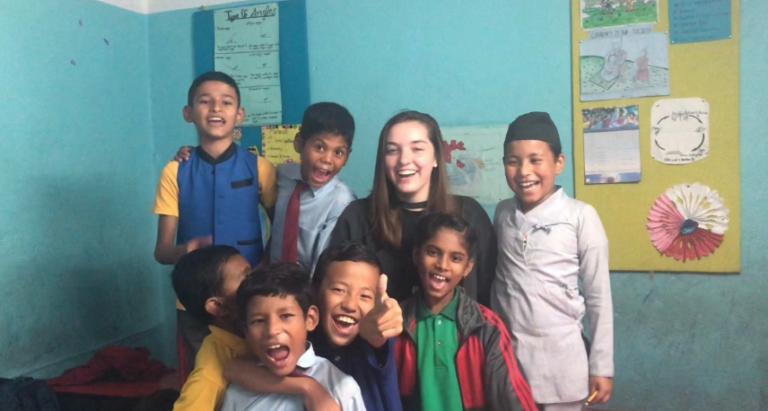All the countries of the world have clichés and stereotypes. But when your population exceeds 209 million inhabitants and your area is approximately 8.5 million square kilometers, you are talking about. We have heard a hundred thousand topics about what Brazil is like: its culture and its people, its music, its food, its festivals and customs. But do we really know as much as we believe or is it all based on prejudices and stereotypes that we have cultivated over the years?
Nothing gives you more vision of the world than traveling, and Brazil, like many countries, is perceived as the country of carnival, samba and soccer. And although many topics are based on reality, it is not until you are in the place that you realize what it really is. Two summers ago I had the opportunity to do a volunteer service thanks to AIESEC in Brazil and I demolished some of the topics that our society has formed or, on the contrary, I verified those that are true.
- Soccer : This is a topic and a reality. Although they do not have a powerful league like any European, football is everywhere, especially when it comes to the national team. During my volunteering, many children wore the famous green-amarela (even for days in a row) and in their spare time they always wanted to play. As for the great temple, the Maracana, it left me speechless. Even completely empty during the tour we took, it is much bigger than any stadium I have seen. The dream of many Brazilians (and probably many football fans around the world).
- Samba : This is a cliché. Samba is clearly the official and most famous music originating in Brazil, but not the only one. What sounds the most everywhere (radio, discos, shops) is another genre: sertanejo. Surely the name will not sound familiar to you, but if I say names like Michel Teló and his famous “Ai se eu te pego” everything makes sense. I even had the opportunity to attend a concert while I was there. Another well-known style is funk. But it is not what you imagine, Brazilian funk is the rhythm that sounds in the low depths, and it is usually frowned upon, as not quality music. Finally, we have the classic bossa-nova, which is not yet popular with young people, if it is for older people who want to appreciate the glories of the country.
- Carnivals : Although my stay was during August-September and therefore not coinciding with the Carnival season, if they told me that it is only a great event in Rio, the other cities have small carnivals where not everything is so spectacular.
- Brazilians : We all have in mind the stereotypes always related to Brazilians and Brazilians: big bodies in swimsuits or bikini bathed by the tropical sun. But those are just stereotypes. Not all of them are brown to begin with: where I lived, a former German colony, a large part of the population was blonde with blue or green eyes. Not all of them have a body 10, the food is very greasy, oily and with many seasonings, and although there are delicious dishes, they are also quite caloric.
- Beaches : I have not had the opportunity to be in many tropical countries but the Brazilian beaches are spectacular. Especially in Florianópolis, the city where I was. The fact that it was winter was a handicap when it came to enjoying a good bath, but just being able to walk along kilometer-long and almost deserted beaches was a pleasure. In addition, many are linked to forests, which gives it an even more exotic air. I also visited Ipanema and Copacabana, mythical beaches of Rio de Jainero, but it was not the same since the city is extremely touristy and the beaches are no exception.
- Christ the Redeemer : I don’t know whether to classify it as a topic or reality. Witnessing one of the 7 wonders of the modern world is spectacular and Christ the Redeemer is not short. The statue is truly gigantic and stands on a mound that you have to access via organized vans. The bad part is that the area that surrounds it is very small and the amount of tourists that surround it makes its enjoyment more difficult. But this is how Rio de Janeiro is, one of the cities that happened to be on my favorites list: because despite massive tourism, it has managed to preserve the magic and essence of Brazil.
- Dangerous : Brazil is a country also known for its dangerousness. The crime rates are high and it was one of the cons that I raised at the beginning. Still, the city I was in was one of the safest in the country and I never had a bad feeling, even at night. In other cities further north it is risky, but we walk around Rio and São Pablo at night without problem. I think the key is to know what you are doing. Dangers exist all over the world, but you should never generalize or live by prejudice.
- Distances : We live in Europe, the old and small continent. Small overall. In America they do not measure things the same as here. For them that we can travel country to country in a few hours seems fascinating. Barcelona-Paris in 2 hours? Impossible. My host family was originally from Porto Alegre, a 6 hour drive south of Florianópolis, but for them it was like going to their second home for a weekend. On the contrary, they had never left the country, they had not even visited the Iguaçú or Rio de Janeiro Falls.
- Food : As I have said before, Brazilian food is quite greasy and, although I sometimes missed the Mediterranean diet, some dishes are delicious. The most typical that I found both in school canteens and at home with my host family was meat seasoned in some way, feijão (typical purple beans) and rice, a lot of rice. In the supermarkets they sold rice in packages of 5 or 10 kilos, I had never seen anything like it. Another typical food is the pão de queijo or cheese bread: small balls where the dough itself is made of cheese. But it doesn’t end here, there are also many sweets, especially the brigadeiro: a mass of condensed milk with chocolate that is used in chocolates, cakes and other types of sweets. There are also açaí ice creams , a tropical fruit that only grows in the Amazon and is served as we serve frozen yogurt here. But if there is something to highlight and that I miss a lot, it is the natural juices: all the flavors you can imagine, all the combinations, fruits that I didn’t even know existed. And if you are passionate about fruit like me, that is heaven on Earth.
- Currency : “Being South America, it will be cheap.” Brazil is an emerging economy and it shows. The Brazilian real is one of the most valued currencies in the south of the continent and we notice it when crossing the border, both with Argentina and Paraguay. Although we exchanged a few reais for pesos or guaraníes respectively, in stores they also accepted reais, since they are much more valuable than their local currency. Currently it is 4 reais per euro, but when I went the conversion was 3-1, so not everything is as cheap as it seems and you have to take that into account when spending.
And finally, my personal advice: do not be influenced by the stereotypes of each country. They all have, just as you have an image formed of them. Let yourself be surprised and you are sure to get a pleasant surprise.
By Cristina Bas
>> Discover our volunteer projects in Brazil


